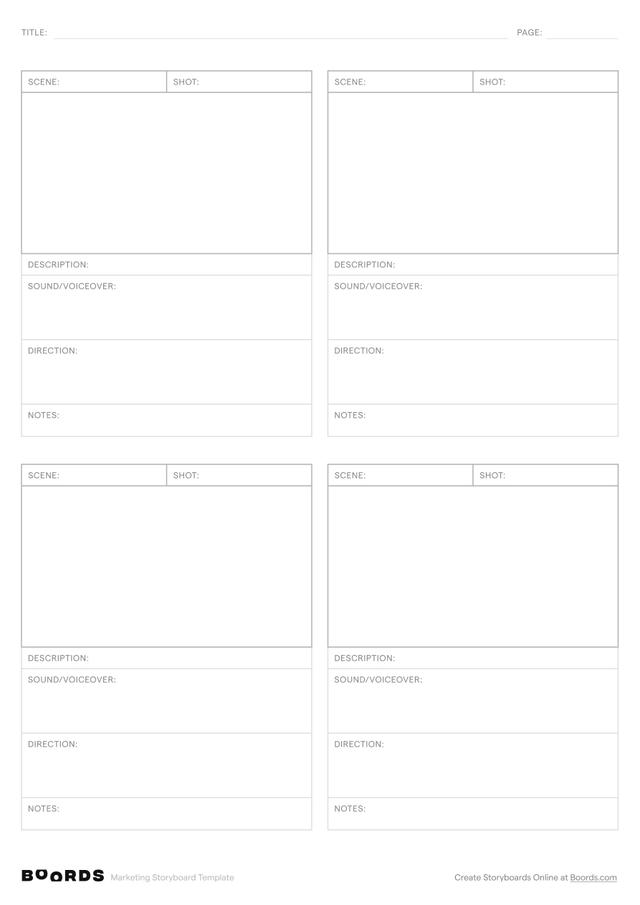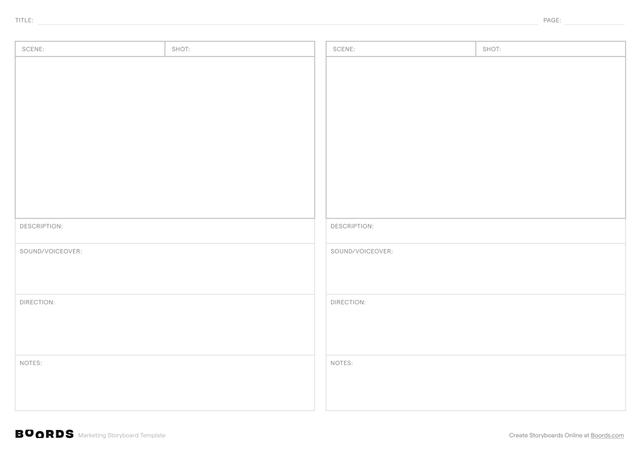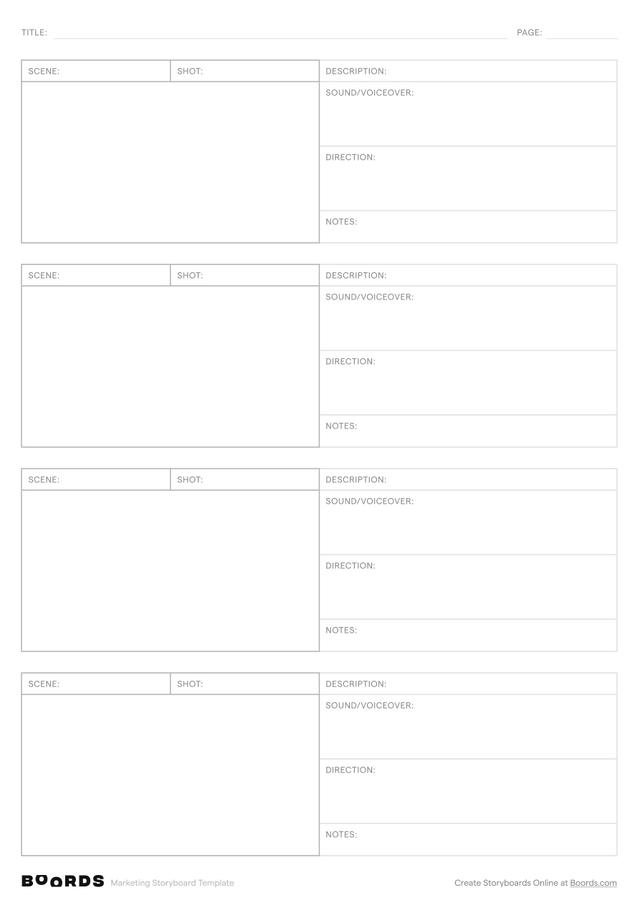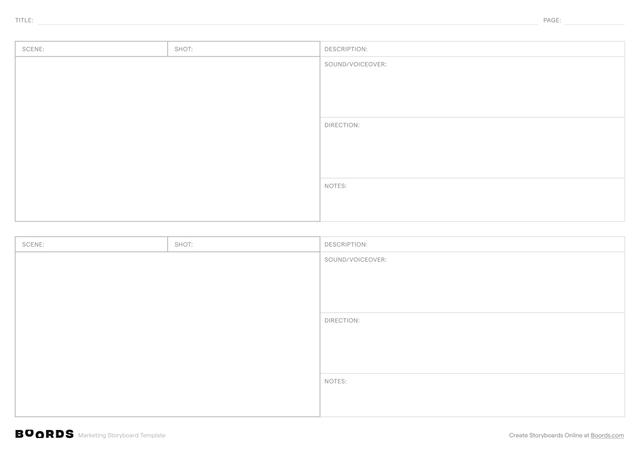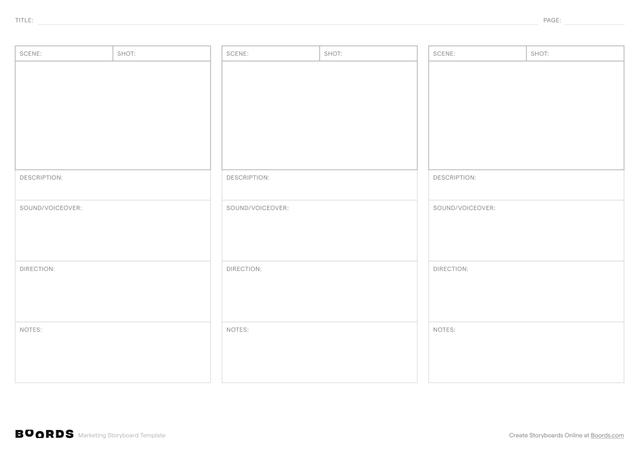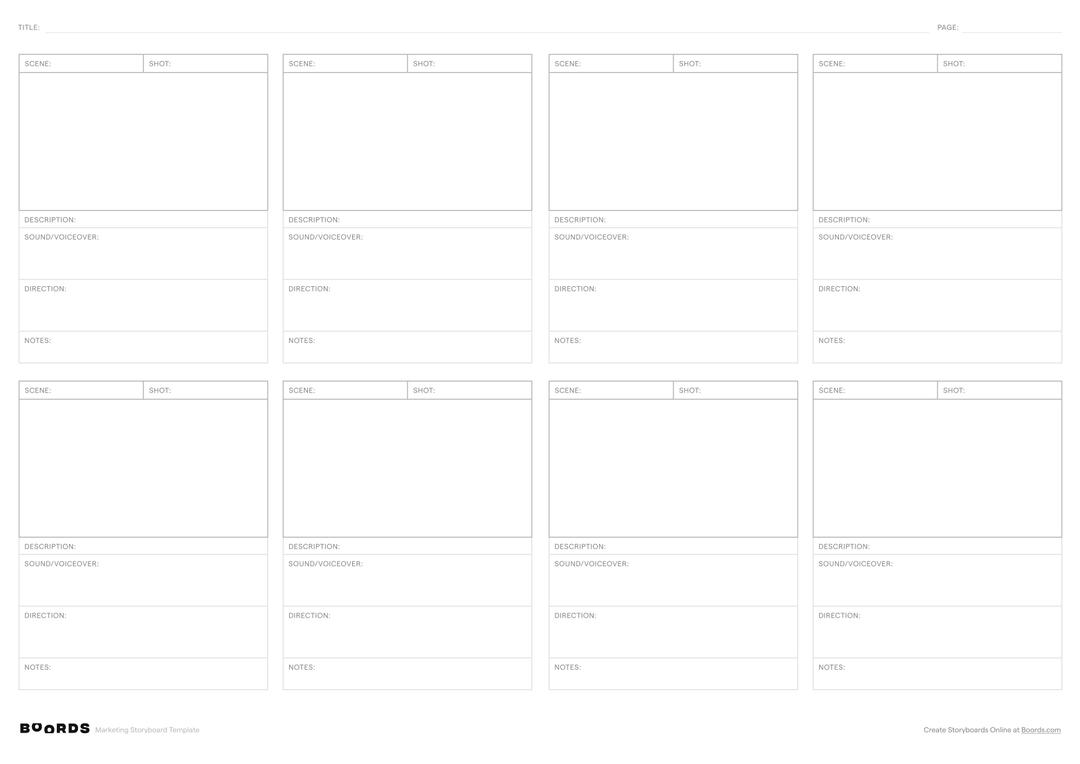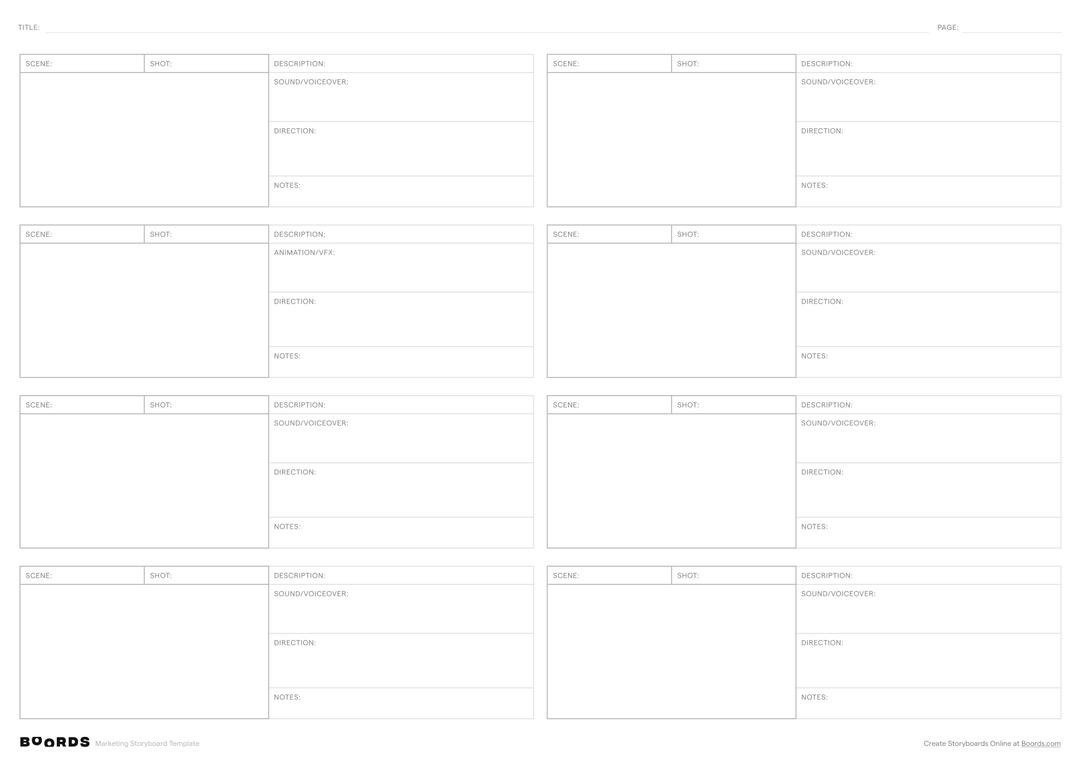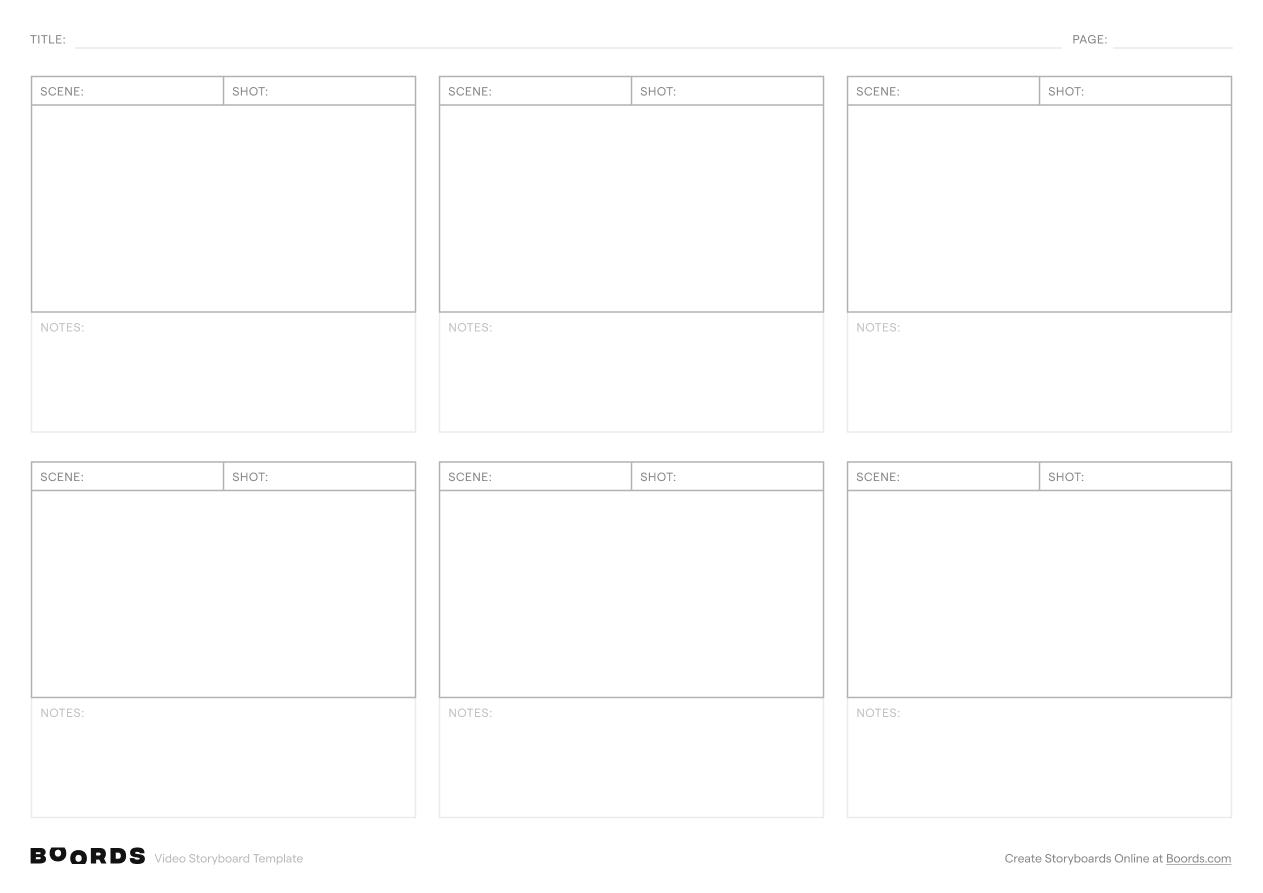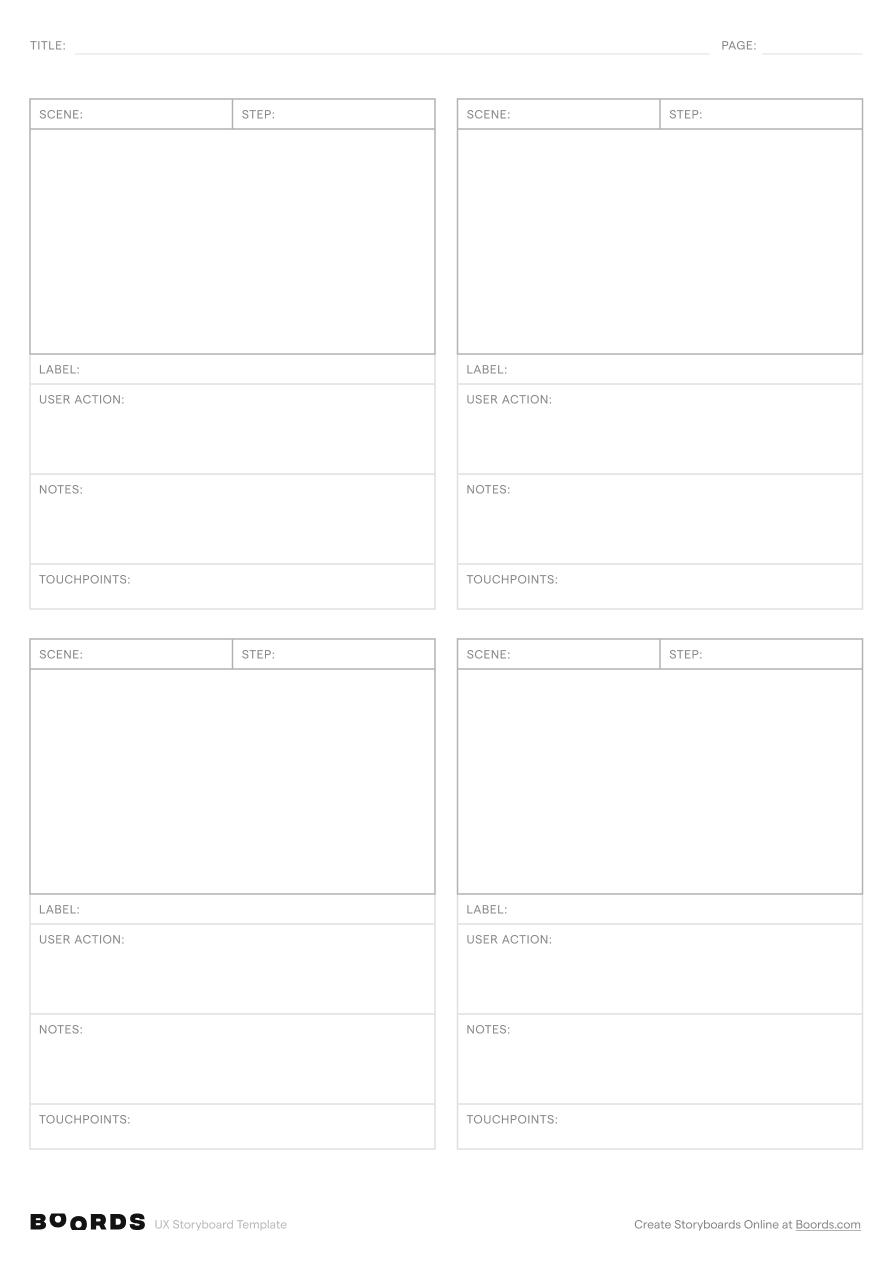Step 1: Add a Title and Page Number

Fill in the "TITLE:" field at the top of the template with a clear, concise name that reflects your marketing video's main theme or purpose. If your storyboard spans multiple pages, indicate the current page number in the "PAGE:" field to keep your documents organized.
Step 2: Label the Scenes

In the "SCENE:" column, provide a brief, descriptive label for each scene of your marketing video. Scenes are distinct segments of your video that focus on a particular topic, location, or narrative point. If a scene spans both panels, repeat the scene label for consistency.
Step 3: Number the Shots

In the "SHOT:" column, assign a sequential number to each shot within a scene (1, 2, 3...). Shots are the individual camera angles, frames, or visual elements that make up a scene. Numbering the shots helps maintain a logical order and flow throughout your storyboard.
Step 4: Write a brief description

In the "DESCRIPTION:" section, write a brief explanation of what is happening in each shot.
Step 5: Specify Sound and Voiceover Details

In the "SOUND/VOICEOVER:" section, indicate any music, sound effects, or audio elements that should accompany each shot. If your marketing video features a voiceover or dialogue, transcribe the script here and align it with the appropriate shots and visuals.
Step 6: Include Directions

Under the "DIRECTION:" heading, provide any additional instructions, camera angles, or shot types to guide the video production process. This may include specific framing, movement, or composition notes to ensure the desired visual impact is achieved.
Step 7: Add Notes and Reminders

Use the "notes:" section at the bottom of each panel to include any additional comments, reminders, or creative ideas related to that portion of the storyboard. This space is ideal for noting any special effects, branding elements, or specific marketing messages to incorporate.
Step 8: Review, Refine, and Collaborate
Once you have completed the storyboard template, review the entire document to ensure a cohesive narrative flow and consistent visual style. Make any necessary revisions or adjustments to enhance the clarity and impact of your marketing message. Share the storyboard with your team to gather feedback and foster collaboration throughout the video production process.
